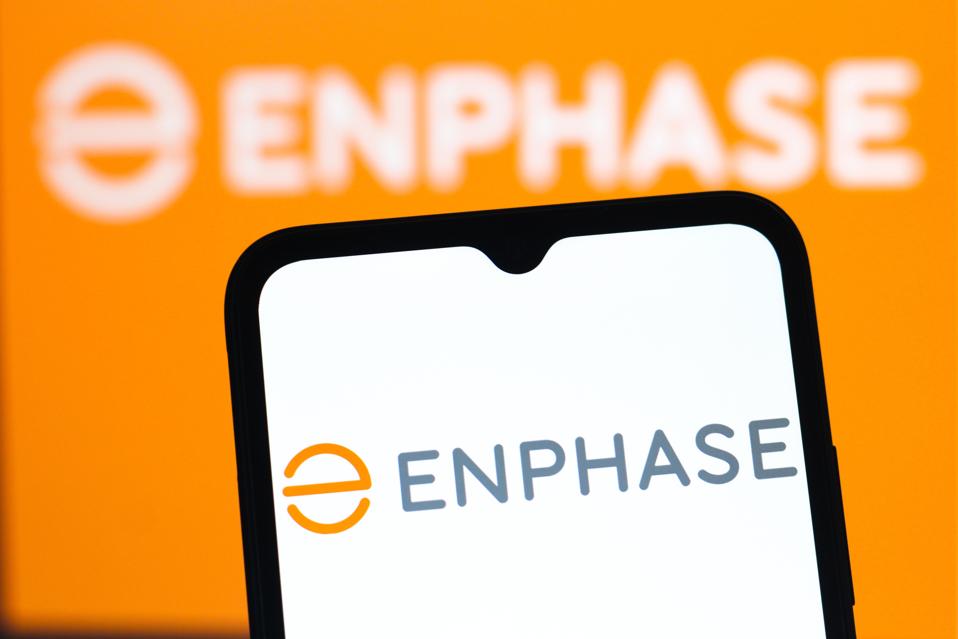Enphase Energy’s shares fell 12% in pre-market trading on Wednesday, April 23rd, following the release of its first-quarter results that presented a dismal picture despite strong year-over-year growth.
Enphase Energy missed analyst expectations, reporting earnings per share of $0.68 (below the $0.73 estimate) and revenue of $356 million (slightly under the anticipated $362 million). This compares with earnings of $0.35 per share on sales of $263 million in the prior-year quarter.
The primary concern for investors was the company’s tariff outlook, which is expected to impact gross margins significantly—2% in Q2 and 6% to 8% in Q3. These tariffs affect Enphase’s Chinese-imported battery cells, putting pressure on future profitability.
The company has stated that this impact should diminish over time as it implements mitigation strategies, including sourcing components from countries other than China.
Compounding these company-specific challenges are broader economic concerns. President Trump’s tariff policies have increased economic uncertainty in the United States, creating an unfavorable macroeconomic environment. Combined with the existing high-interest rate environment, these factors may continue to pressure Enphase’s performance. We think that these challenges could potentially drive ENPH stock price down to as low as $20 per share.
Here’s the thing: in a downturn, ENPH can lose; no, there is evidence, from the recent economic downturns, that ENPH stock lost as much as 75% of its value over a span of just a few quarters. Now, of course, individual stocks are more volatile than a portfolio, and in this environment, if you seek upside with less volatility than a single stock, consider the High-Quality portfolio, which has outperformed the S&P 500 and achieved returns greater than 91% since inception.
Why This Matters Now
Despite Enphase’s strong year-over-year growth in its energy business, investors should be mindful of significant macroeconomic and geopolitical challenges. While immediate inflation concerns have subsided, the current administration’s aggressive tariff and immigration policies are creating new economic anxieties that could lead to future instability.
This economic uncertainty is compounded by escalating geopolitical tensions. The administration’s policy initiatives have intensified trade disputes and complicated diplomatic relationships with key allies including Canada, Mexico, and European nations. Together, these factors have created a more complex and higher-risk environment for companies operating in the renewable energy sector.
Concerning Performance Metrics
Notably, ENPH stock has seen an impact worse than the benchmark S&P 500 index during some of the recent downturns —a critical consideration for investors evaluating their risk tolerance in today’s volatile environment.
While investors have their fingers crossed for a soft landing by the U.S. economy, how bad can things get if there is another recession? Our dashboard How Low Can Stocks Go During A Market Crash captures how key stocks fared during and after the last six market crashes.
How Resilient Is ENPH Stock During A Downturn?
Inflation Shock (2022)
- ENPH stock fell 77.5% from a high of $336.00 on 2 December 2022 to $75.56 on 9 November 2023, vs. a peak-to-trough decline of 25.4% for the S&P 500
- The stock is yet to recover to its pre-Crisis high
- The highest the stock has reached since then is $137.34 on 26 December 2023 and currently trades at around $53
Covid Pandemic (2020)
- ENPH stock fell 59.4% from a high of $59.09 on 21 February 2020 to $23.99 on 18 March 2020, vs. a peak-to-trough decline of 33.9% for the S&P 500
- The stock fully recovered to its pre-Crisis peak by 11 May 2020
Preserve & Grow Wealth With Risk-Focused Quality Portfolios
ENPH stock has experienced a decline of over 40% from its recent highs of around $90 in November 2024, primarily reflecting investor concerns regarding the potential impact of tariffs on the company’s business. This downward trend could persist given the prevailing macroeconomic uncertainty. Drawing a parallel with the 2022 economic downturn, during which the stock fell by 77%, a similar drop could potentially push ENPH share price to $20.
While ENPH has demonstrated a high single-digit average revenue growth over the past three years, the stock still commands a premium valuation with a price-to-sales (P/S) ratio of 5x, versus 2.3x for the broader S&P 500.
Considering this context, investors holding ENPH stock should consider: if the share price were to fall toward $30, or $20, or even lower, would you maintain your position or be inclined to sell?
Holding on to a falling stock is not always easy. Trefis works with Empirical Asset Management – a Boston area wealth manager, whose asset allocation strategies yielded positive returns during the 2008/2009 timeframe, when the S&P lost more than 40%.
Empirical has incorporated the Trefis HQ Portfolio in its asset allocation framework to provide clients better returns with less risk versus the benchmark index; less of a roller-coaster ride, as evident in HQ Portfolio performance metrics.
While investors have their fingers crossed for a soft landing by the U.S. economy, how bad can things get if there is another recession? See the last six market crashes compared.
Market Beating Portfolios | Rules-Based Wealth

